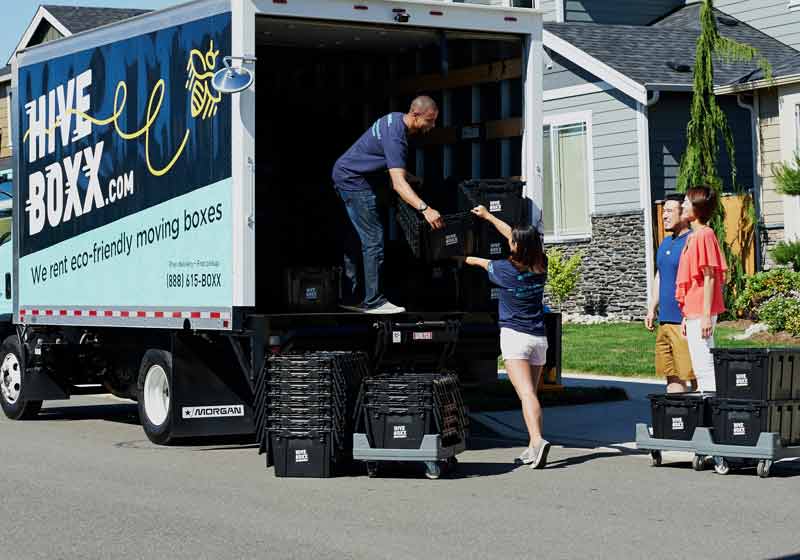FDIC-Insured - Backed by the full faith and credit of the U.S. Government
-
-
-
FNBO
Mortgage
Date Published: October 07, 2020
-

Packing for a Move? 10 Tips to Make it Your Best Move Yet
You’ve either just bought or possibly built a new home, right? That’s a big step. Congratulations! You’re probably very excited and maybe even a little nervous about all that comes next – paying a mortgage for the first time, saying good-bye to friends, and getting to the new home with all your things.
You’ve got a lot on your mind, so we’ve pulled together a list to help ease the stress of the transition and ensure you get to the new place with all the right stuff.
Here’s are the ten things people are most likely to overlook when preparing to make the big move.
Top 10 Things to Consider When Packing for a Move:
1. Don’t put all of your available cash down on a residence.
Leave something in the coffers to pay for moving expenses! With the average cost of a local move coming it at more than $1200, and even higher to move out of state, you’ll be glad you set something aside for the occasion.
2. Don’t pack away your financial documents.
Particularly if you’re buying a home. You may be asked to produce certain records for closing, and that can be difficult if they’re packed in a box on a moving truck. You might also want to consider securely hand-carrying certain other documents, such as wills, insurance policies and sensitive bank information.
3. Hire a mover as soon as you have a closing date.
Moving companies fill up quickly, particularly for weekend moves and days that land at the end or the beginning of a month. That’s when most leases start so competition can be stiff. If possible, aim for the middle of the month and look for a weekday to load up the truck.
4. Plan ahead for utility connections.
Although it may take only the simple flip of a switch to turn them on, you can typically expect a 3- to 5-day turnaround when it comes to connecting your electricity and water. In some cases, as much as 10 days. Alert the utility companies at your new home, as well as the residence you are leaving, at least two weeks before your moving date.
5. Think about children and pets.
As boxes and furniture are moved in and out of your home, it can be overwhelming for your kids, and your animals may find a way out through an open door. Planning ahead and possibly finding an alternative place for them to spend the day could make the process easier for everyone in the home.
6. Remember that special items require special consideration.
While most things you pack are easy to place in a box, some require special attention, such as a child’s playscape or a piano. Traditional moving companies may not handle these items unless they are disassembled, or moving them could come with an extra charge. Think about how to handle them or if it might be easier to replace them after the move. And remember, if you disassemble anything you move, be sure you know how to put it back together. Step-by-step cell phone photos are your friend!
7. Mind the heirlooms.
If you have expensive heirlooms, such as art or jewelry, or even items of sentimental family significance, you may want to pack and keep them with you if possible. Most moving companies offer limited coverage for breakage but won’t provide enough for the restoration of highly valuable items, and it certainly won’t make up for any emotional loss.
8. Consider getting moving insurance.
According to Insurance Information Institute, homeowner and renter policies cover belongings while they are in transit, but not while being handled by movers. Most moving companies offer coverage for your household items, but it’s limited to a flat rate—no more than 60 cents per pound per article. If the value of your belongings adds up to a significant sum, additional moving insurance can also cover the gap between the true cost of repair and what the moving company will pay.
9. What if you can’t get right into a new home?
It isn’t always possible to move into a new residence the same day you move out of the old. If this is the case, consider what you will do with your belongings. Renting a storage unit, even a mobile version, is a good way to store your belongings for the short term and it buys you time for moving in at your own pace.
10. Make a DO NOT pack list.
It’s easy to worry about all of the things you WILL pack and how you’ll keep them safe, but you can streamline the process by first creating a list of items you WON’T pack. Setting those items aside on moving day, or removing them from the home at an earlier date, will pay off when unpacking on the other end.
Remember all the wonderful and exciting things that are in store when you make a move and how a little preparation goes a long way. Adding these often-overlooked items to you pre-moving to-do list, will create a more efficient process and a smoother transition when you get to your “Hello, house.”
The articles in this blog are for informational purposes only and not intended to provide specific advice or recommendations. When making decisions about your financial situation, consult a financial professional for advice. Articles are not regularly updated, and information may become outdated.
